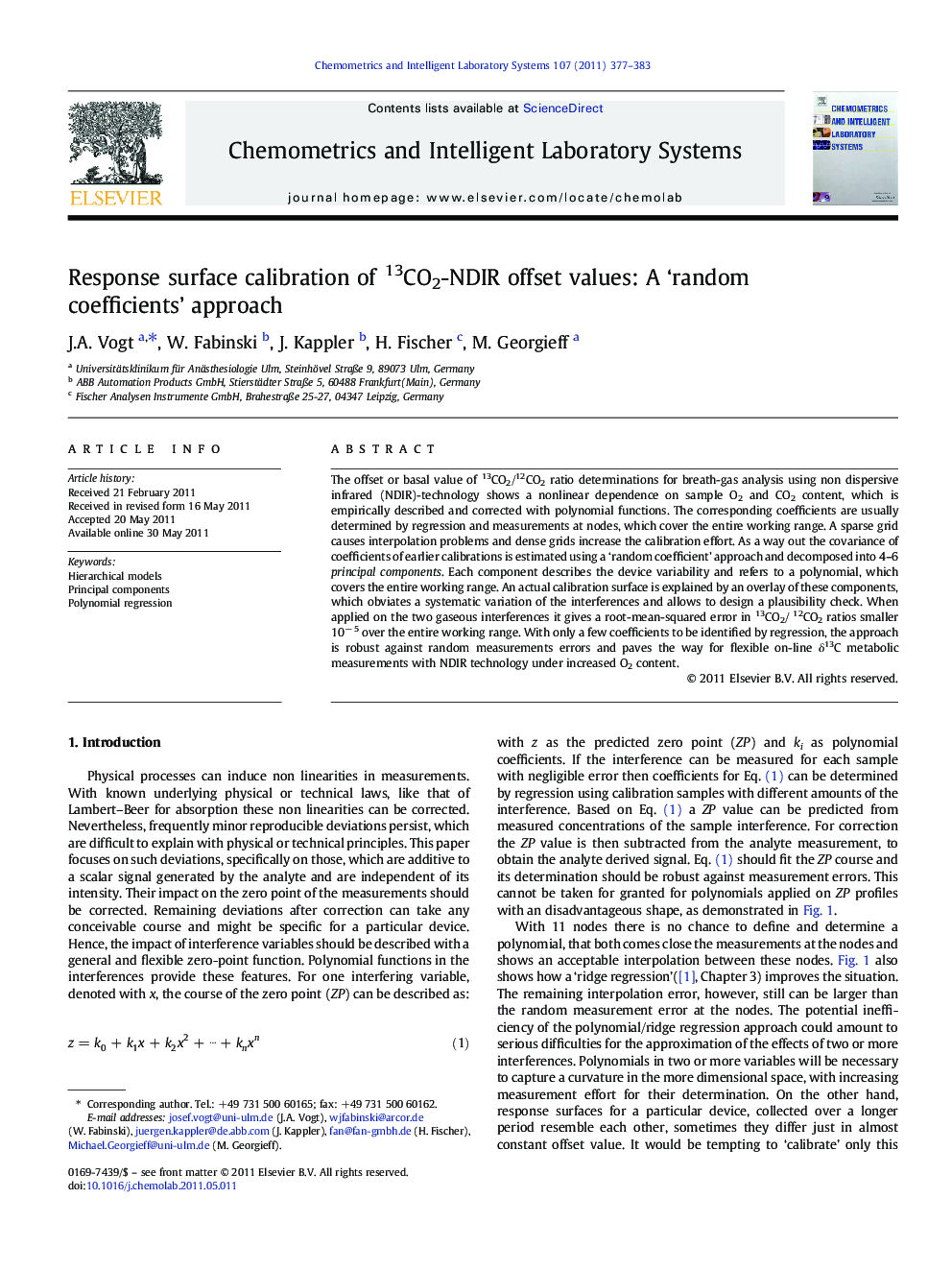| Article ID | Journal | Published Year | Pages | File Type |
|---|---|---|---|---|
| 1181211 | Chemometrics and Intelligent Laboratory Systems | 2011 | 7 Pages |
The offset or basal value of 13CO2/12CO2 ratio determinations for breath-gas analysis using non dispersive infrared (NDIR)-technology shows a nonlinear dependence on sample O2 and CO2 content, which is empirically described and corrected with polynomial functions. The corresponding coefficients are usually determined by regression and measurements at nodes, which cover the entire working range. A sparse grid causes interpolation problems and dense grids increase the calibration effort. As a way out the covariance of coefficients of earlier calibrations is estimated using a ‘random coefficient’ approach and decomposed into 4–6 principal components. Each component describes the device variability and refers to a polynomial, which covers the entire working range. An actual calibration surface is explained by an overlay of these components, which obviates a systematic variation of the interferences and allows to design a plausibility check. When applied on the two gaseous interferences it gives a root-mean-squared error in 13CO2/ 12CO2 ratios smaller 10− 5 over the entire working range. With only a few coefficients to be identified by regression, the approach is robust against random measurements errors and paves the way for flexible on-line δ13C metabolic measurements with NDIR technology under increased O2 content.
